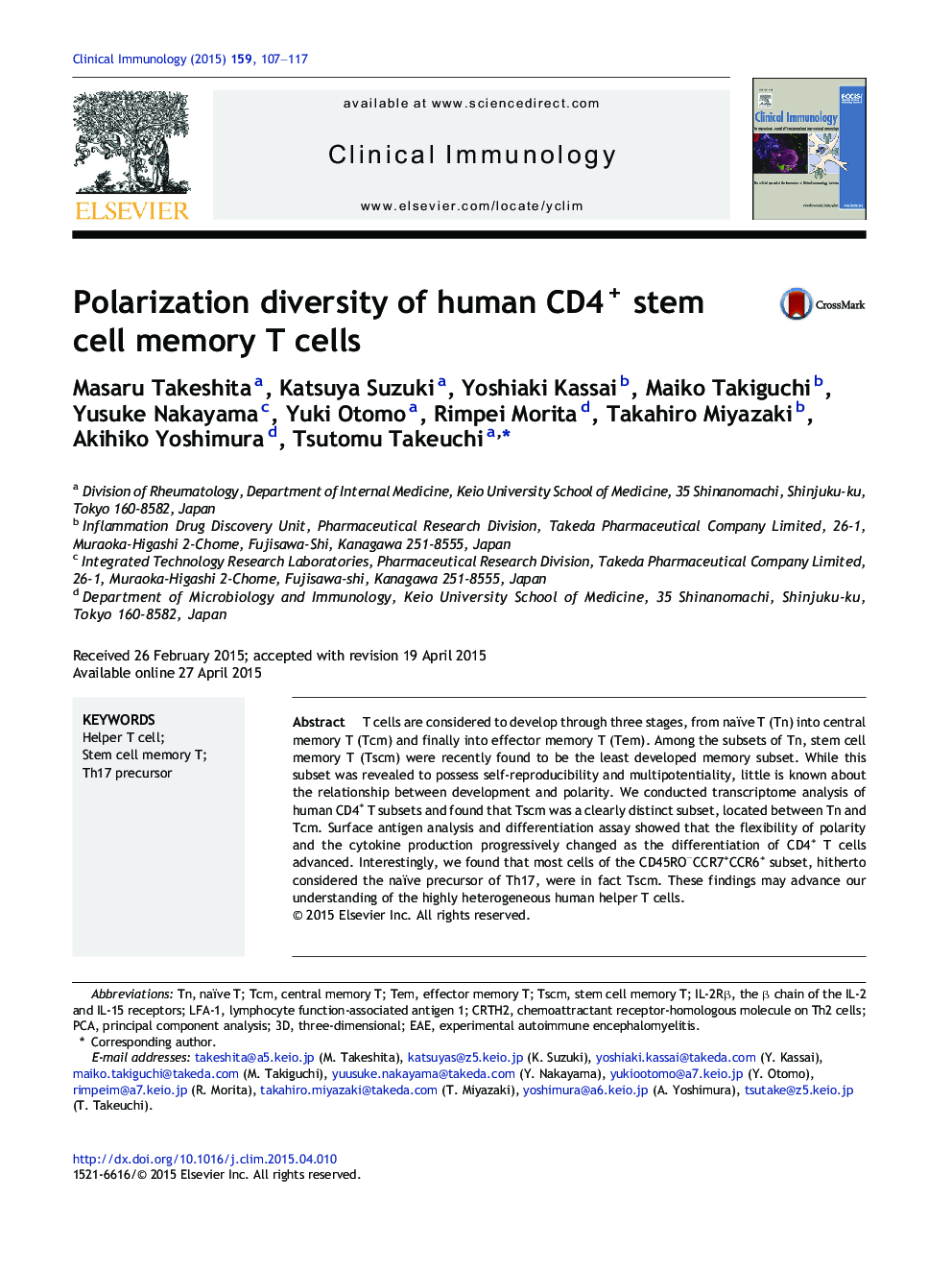| Article ID | Journal | Published Year | Pages | File Type |
|---|---|---|---|---|
| 6087399 | Clinical Immunology | 2015 | 11 Pages |
â¢CD4+ T cells gradually acquire polarity during their differentiation process.â¢Tscm cells represent an independent stage between Tn and Tcm.â¢Flexibility of polarity differed among developmental stages.â¢Tscm proliferated well and produced cytokines at a rate equivalent to that of Tcm.â¢Th17 cells are derived from CCR6+ Tscm.
T cells are considered to develop through three stages, from naïve T (Tn) into central memory T (Tcm) and finally into effector memory T (Tem). Among the subsets of Tn, stem cell memory T (Tscm) were recently found to be the least developed memory subset. While this subset was revealed to possess self-reproducibility and multipotentiality, little is known about the relationship between development and polarity. We conducted transcriptome analysis of human CD4+ T subsets and found that Tscm was a clearly distinct subset, located between Tn and Tcm. Surface antigen analysis and differentiation assay showed that the flexibility of polarity and the cytokine production progressively changed as the differentiation of CD4+ T cells advanced. Interestingly, we found that most cells of the CD45ROâCCR7+CCR6+ subset, hitherto considered the naïve precursor of Th17, were in fact Tscm. These findings may advance our understanding of the highly heterogeneous human helper T cells.
